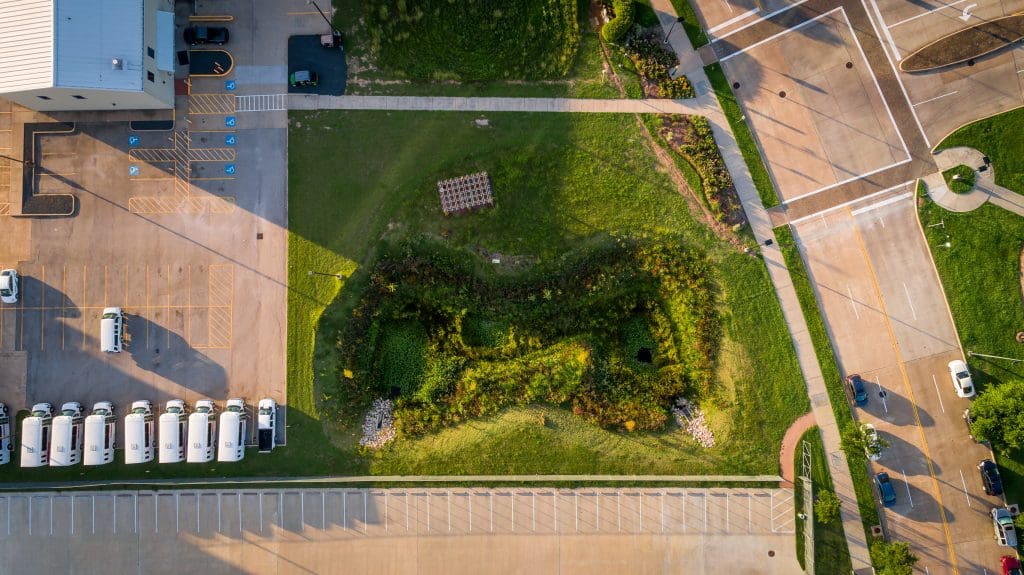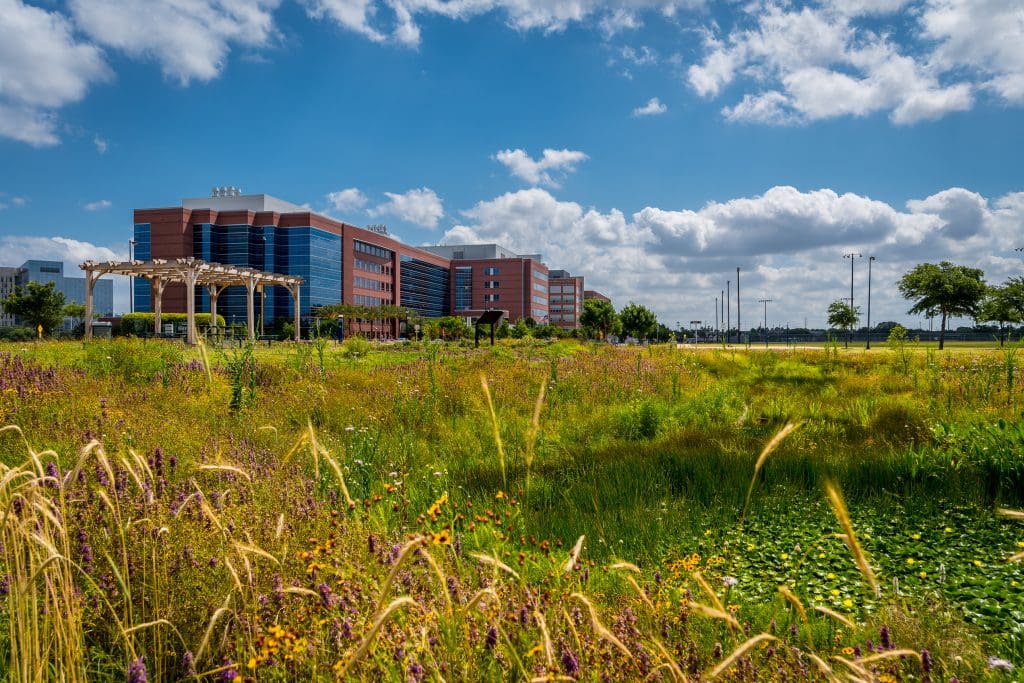
When new construction required MD Anderson Cancer Center in Houston, Texas, to add a stormwater detention pond to capture excess runoff, they decided it provided a good opportunity to make the new detention area a naturalized wetland to restore native habitat to an urban location.
They turned to Lawn Management Company, Inc., based in Houston, Texas, to make this a reality. From start to finish it took three months to convert an old parking lot into a stormwater retention pond that assists with natural water filtration from surface parking lots to the Houston Bayou System.
The company’s work earned them a Gold Award in the erosion control/ecological restoration category in the 2021 Awards of Excellence.
“It means the world to us and our client to have been selected for the Award of Excellence,” says Adam Purnell, branch manager for Lawn Management Company, Inc. “Being a cancer hospital, it is encouraging to create something sustainable that patients and researchers can look at for hope.”

The pond has a bowtie design. The runoff from two parking lots and street drains into the pond through an inlet drain on the left side. A three-tiered, stair-stepped bottom was created to effectively move the water through the left side of the pond.
Once this pond has filled, the water moves to the auxiliary pond on the right side. When the auxiliary pond fills to maximum capacity it leaves the pond through an outlet on the right and drain into the Houston Bayou.
Native wetland plants were installed at the bottom of the pond because they are efficient at cleaning stormwater.
“The plant palette was selected with guidance from the Katy Prairie Conservancy which recommended native species for the area,” Purnell says. “We also used specialized seed mixes to reduce erosion and ensure establishment as well as nesting bunch grasses for wildlife.”

Lawn Management Company also installed native wetland tree species around the pond to act as anchor points for wildlife. To reduce erosion, organic geotextiles were used along with native grass and wildflower seeds.
It was difficult to establish native plant material while reducing invasive species, as the team had to pull these undesirable species by hand. To help the native material flourish, employees had to wear waders and wander the pond to remove the invasive plants.
“In all honesty, the work is still continuing,” Purnell says. “Being a primarily urban location, weed seeds are constant and we scheduled removal of invasive species, i.e. Bermuda, King Ranch Bluestem, twice a year.”

Aside from creating a wetlands area that effectively controls and cleans stormwater, the mitigation pond also serves an educational tool. A pergola and educational sign were installed to teach community about the importance of wetlands in the Houston ecosystem.
Since the completion and maturation of the pond, several families of ducks call the pond home along with different species of butterflies and reptiles.
Interested in participating in the Awards of Excellence? Be sure to enter your projects by July 11, 2022.

